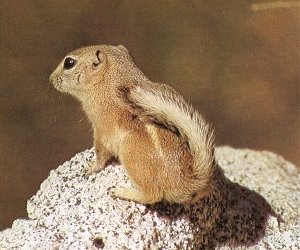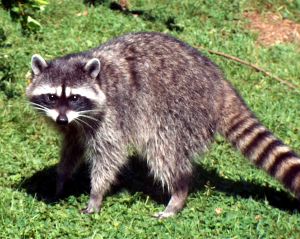Meerkat
The Meerkat is a sort of weasel, or mongoose but a bit larger and colored differently.
The Meerkat is gray or tan and has a dark band on its back.
It is yellow or tan on the underside, has dark eye patches and a tip of black on its tail.
The Meerkat lives in some of the driest and least vegetated country of all animals.
It lives in hardened ground with stony rivers and river banks and can burrow among the rocks and hardened soil with ease.

Meerkat
The Meerkat eats buried invertebrates, beetle larvae, crickets, scorpions, spiders, butterfly pupae and larvae, moths, and flies. It will also eat termites, snakes mice and birds.
Suricates which are another name for the meerkat will leave their den after the sun comes up and visit a bathroom which all the meerkat community shares.
It can then be found sunbathing, and socializing with the other Meerkat before it forages for breakfast. The Meerkat will then relax outside its burrow until dusk and reenter the burrow to sleep.
They get up later on cold or rainy days, much like humans do.
Meerkats will walk in their toes and jump and run at the same time, but they are not extremely speedy movers.
They do not climb well but can dig with extraordinary speed.
Sunbathing Meerkats are a truly amusing sight because they will sprawl with their tummies exposed to the sun. On their backs or twisted unbelievably toward one side or the other.

Meerkat
At night they will sleep in groups folded together from front to back to share their body heat.
Meerkats can have up to three litters of small kits per year, and each litter will be about 3 animals.
They gestate for about 11 weeks and give birth to three little ones, which everyone will help to care for and raise while mom goes to work to find food.
Like a cat the mother meerkat must lick her baby to stimulate them to urinate and lick their faces to wash them.
During weaning which begins about 3 to 4 weeks, until the babies are about 2 months old the mother teached them to forage and hunt.
By running away from them while she carries food, using their tendency to snatch food to teach them to hunt for their own.
Find out more about the Meerkat over at Wikipedia »




Aren’t these things cool. I watched them on television on meerkat manor and they are just cool. I want one. ~L~